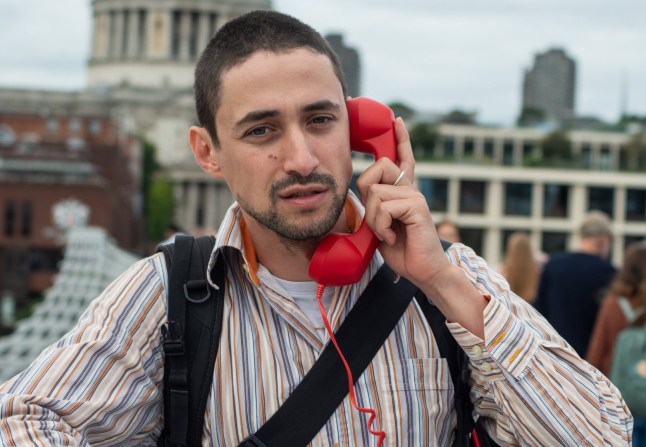
Joe Bloom is the man behind the film series (Picture: Katie Ingham / Metro)
Standing on the edge of Millennium Bridge,my arms hang over the metal railing as I talk into a phone. London’s hallmark skyscrapers tower behind me,while I stare absent-mindedly at the glass-fronted Blackfriars Station ahead.
It’s 5pm on a weekday and people are rushing out of work. So caught up in their own world,they barely register me,even though my ear is pressed into a vivid red handset. My attention is not on them either.
I am focused on confessing my innermost feelings that I’ve never expressed out loud,mainly because I didn’t even realise I had them until just now.
‘Maybe I tell other people’s stories because I’ll never fully know my own,’ I admit. Just a few minutes ago,I was giggling into the handset while explaining that it was a love of rom-com journalists that led me to my career,but I’ve been nudged to go deeper.
I’m not speaking to a therapist,a best friend,or my mum; instead,the soothing voice at the other end of the phone belongs to Joe Bloom,a perfect stranger.
In the distance,I can just about make out his figure standing on the pebbled beach by the River Thames,in front of the Tate Modern. The 30-year-old is looking into a camera pointed at me,and he slowly zooms out to show the world going on around as I speak. It’s all part of his well-known film series,A View,from a bridge,which,since its inception in 2023,has 178 videos on Instagram and gained 582,000 followers.

A View,from a bridge is a film series that people have grown to love (Picture: Katie Ingham / Metro)
You may be familiar with the concept; each video follows a simple format — a person shares something about their life while standing on a bridge,talking into an old-school phone. The moment is recorded on a low-fi camera,while later in the editing suite,instrumental music is added to complement the original audio.
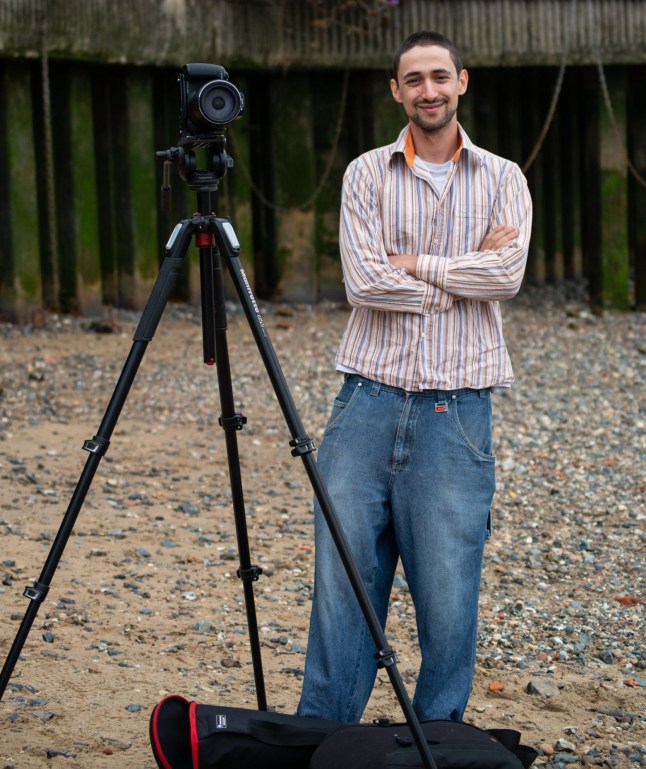
I could just see Joe on the beach (Picture: Katie Ingham / Metro)
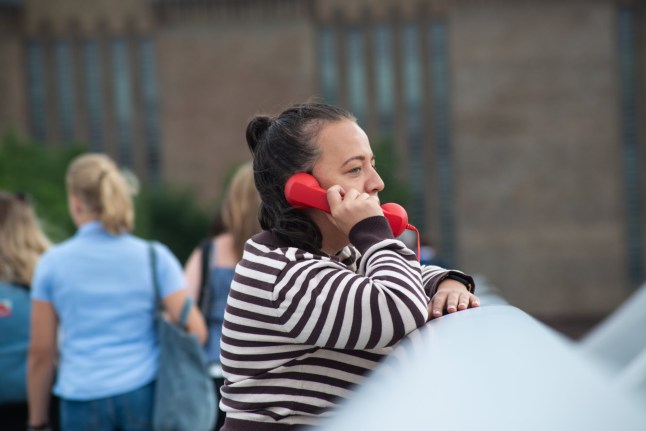
I experienced both sides of the telephone call (Picture: Katie Ingham / Metro)
The contributors are mainly randomly selected passers-by,who are asked if they’ve anything they want to say. However,due to its rising popularity,celebrities have also picked up the receiver in pre-arranged segments. It started with Fontaines D.C.’s lead singer Grian Alexander Chatten talking about the ‘idyllic fake world’ we live in to cope with reality,but it was Adolescence star Ashley Walters musing about toxic masculinity and the importance of nurturing young boys’ emotions that really took things up a notch. Cynthia Erivo,Paul Smith,and Loyle Carner are also among the famous faces who have featured.
In recent weeks,the posts (which also go on TikTok) have included a man’s heartbreaking tale of becoming homeless as a teenager before being taken in by a girlfriend who sadly died aged 22,a 75-year-old woman saying she felt dejected when forced out of the workforce,and a frustrated woman ranting about the cost of going overseas for a hen party (the latter divided the comments section).
https://www.instagram.com/p/DNiMk6HI5mJ/
To get the latest news from the capital visit Metro's London news hub.
It started with Londoner Joe craving a different type of street interview than those always cropping up on his socials. ‘So many online interviews were presenter-led,but I wanted something focused on individuals,and slower paced,’ he explains to Metro.
Having previously made his name creating oil paintings and short film documentaries on subjects such as ‘London’s happiest bus driver’ and a flat earth convention,Joe decided to try it himself.

Joe realised what he didn’t like before coming up with the idea that we see online today (Picture: Katie Ingham / Metro)
Knowing what to avoid was the first step,but the next was figuring out how to remain off-screen but keep it captivating. Joe considered walkie-talkies,but talked himself out of it. ‘What would it mean? That they were on an undercover mission? Everything needs a reason,’ he stresses.
A stroke of inspiration from his childhood came to him: ‘I remembered my mum had a red handset when we were growing up.
‘It rang loudly,like it had a f****ing bell rattling inside of it,so my dad would often unplug it,’ he remembers with a laugh. Joe decided it was time to metaphorically plug it back in,as telephone conversations feel intimate and nostalgic,and so could lead to special moments.
He is himself a big fan of the phone call,an unusual trait for a millennial,‘much to the detriment of whoever I’m calling,because no one seems to want to be called,’ he jokes. ‘I’m not a texter as so much gets lost in translation.’
One special person in particular helped him foster a love of phone calls: ‘I loved ringing my grandma. She was very interested in everything and always proud when I told her about something artistic; she saw the joy in doing something for the sake of beauty,which is quite rare,especially for older generations. She would have loved this series.’
Joe decided to use bridges as the focal point,to reflect being in-between,as our thoughts often are.
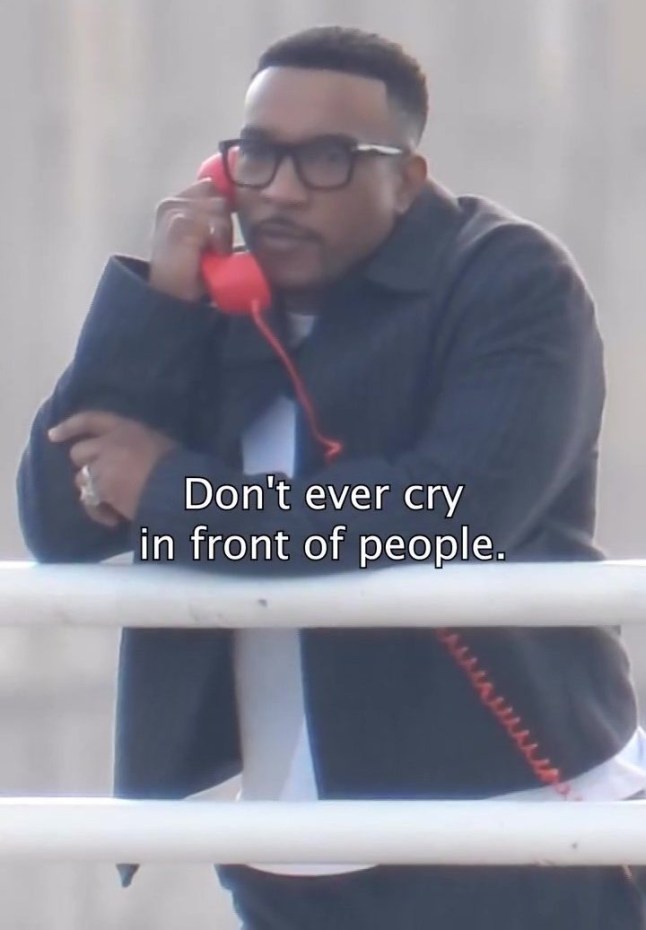
Ashley Walters has taken part in the series (Picture: @aview.fromabridge)
With the videos growing increasingly popular,Joe allowed us to see how things work,which is how I ended up disclosing my identity confusion in public and watching people willingly hand over pieces of themselves to the internet. Crucially,I also got to understand how Joe gets strangers talking,something that is edited out of uploads.
The project’s setup is small,so it doesn’t attract too much attention,which means Joe has only been moved along once for having no permit. The handset really does ring his phone,and Joe listens to every word through his AirPods,communicating with the contributor just as you would in a normal phone conversation.
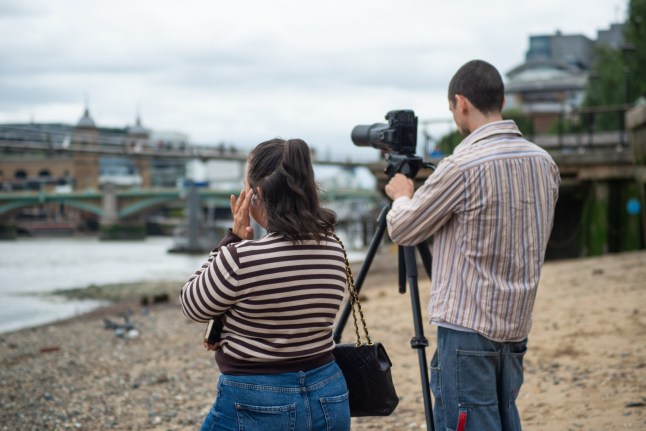
Joe is a soothing voice on the other end of the phone (Picture: Katie Ingham / Metro)
I become a silent third party when Joe hands me the left AirPod. I listen to a young man talk about showing his new girlfriend from York,the City of London School building,visible just off-camera. Picking up on something,Joe asks about his feelings on private schools,and the man admits his children wouldn’t attend them. Joe,with his hands behind his back,takes in each word. Soon,the speaker is explaining that while he had a good time,it’s too much of a contrived bubble.
Next,I gain an insight into the other side of things. On the bridge,Joe’s close friend Hossam Fazulla,who is also winning the internet with Food I Can’t Read,is stopping passersby to ask if they’ll take part. The task has gotten much easier as people have already heard about the series. This includes the next participant,a young man,who talks about an apathy problem in London.
As he hands back the phone,he admits to feeling shaken. Giving people the opportunity to speak about things they feel passionate about,but don’t often get the chance to,can be a moving experience. The vulnerability leads to fans complimenting the posts for providing a snapshot of what it’s like to be human,and opening themselves up,too.
‘It’s really nice to be able to have refugees or other marginalised communities,such as trans people,be able to talk about contentious topics and not experience a pile-on,’ Joe says.

Joe is selective about who appears (Picture: Katie Ingham / Metro)
‘I think it helps that nothing is ever generalised. It’s always a specific story about a specific life experience,and we don’t have an opinion for opinion’s sake.’
Joe has a firm rule: ‘We’ve never put a video out where someone is trying to convince someone of their way of life. Every video is something I would be comfortable talking about.’
This means not every caller will make it onto the account; around 40% actually get published. Even celebrities whose PR people
United News - unews.co.za